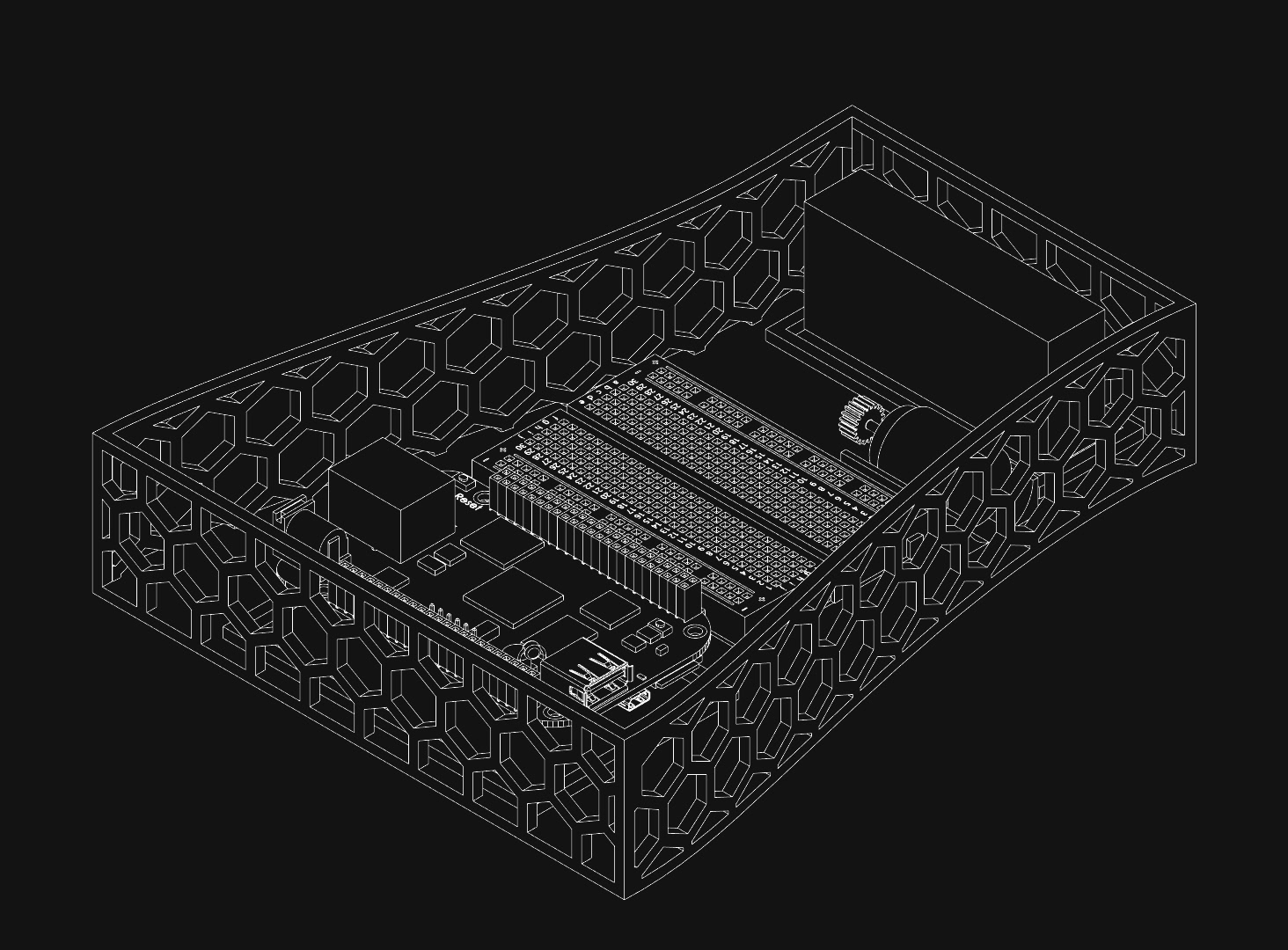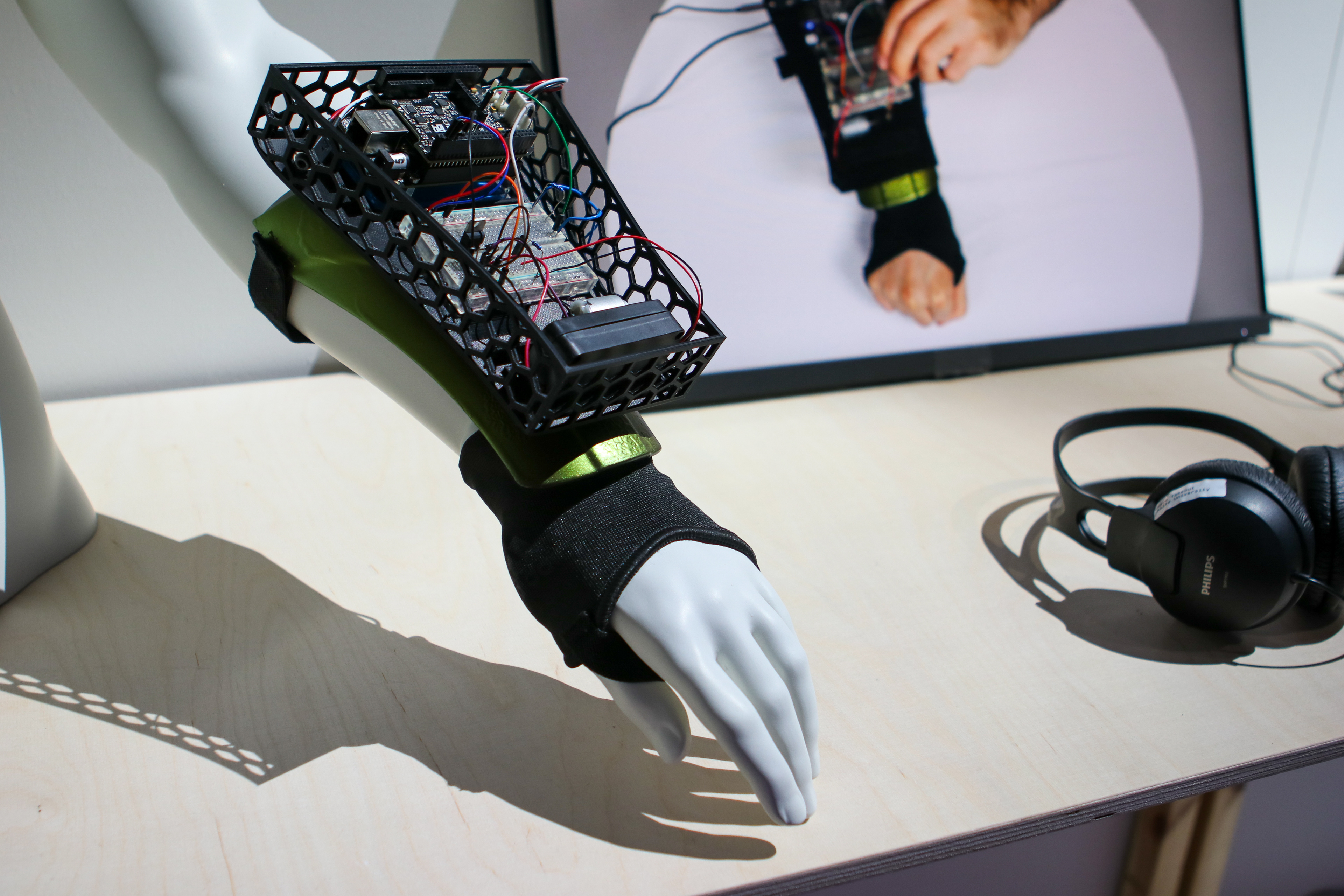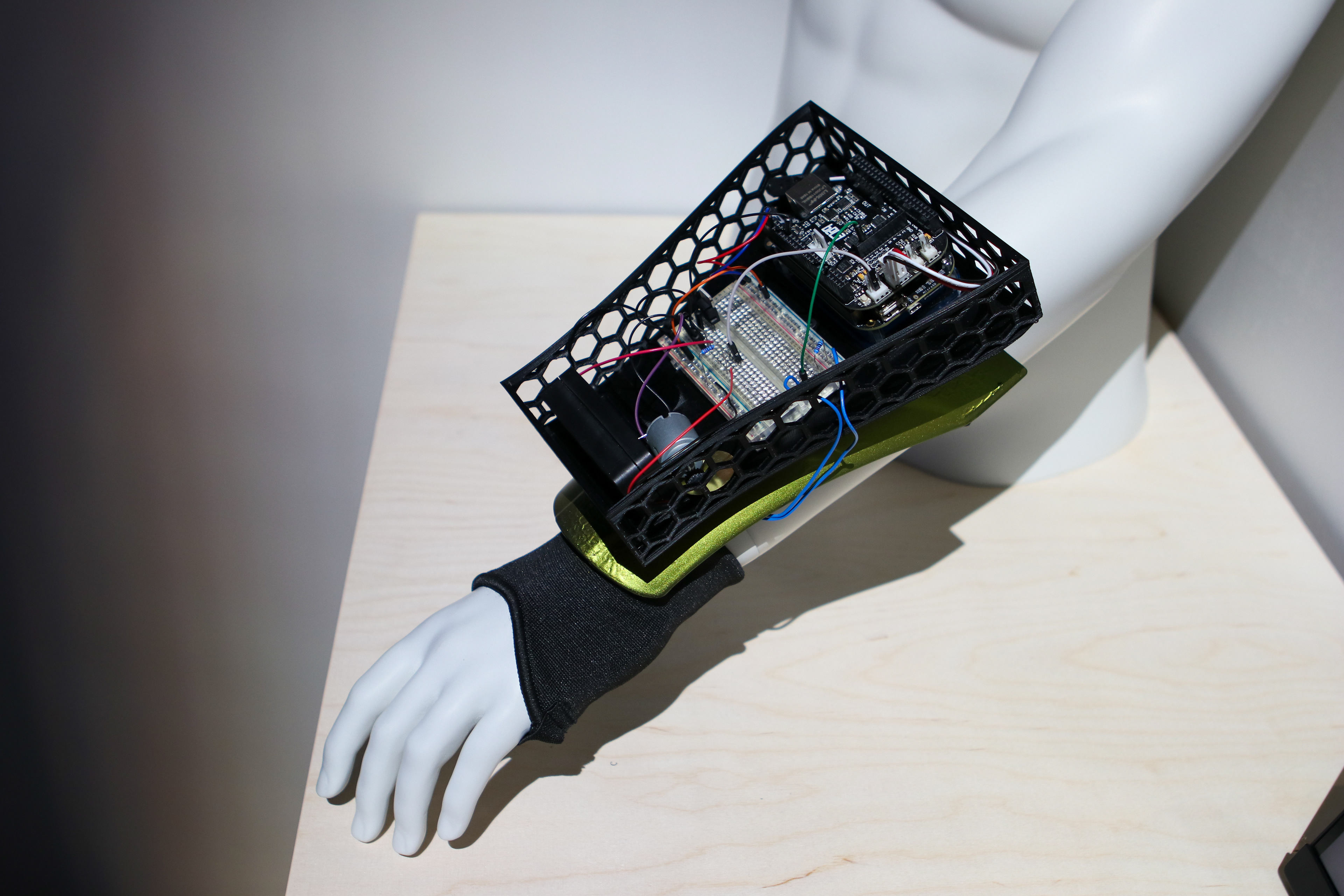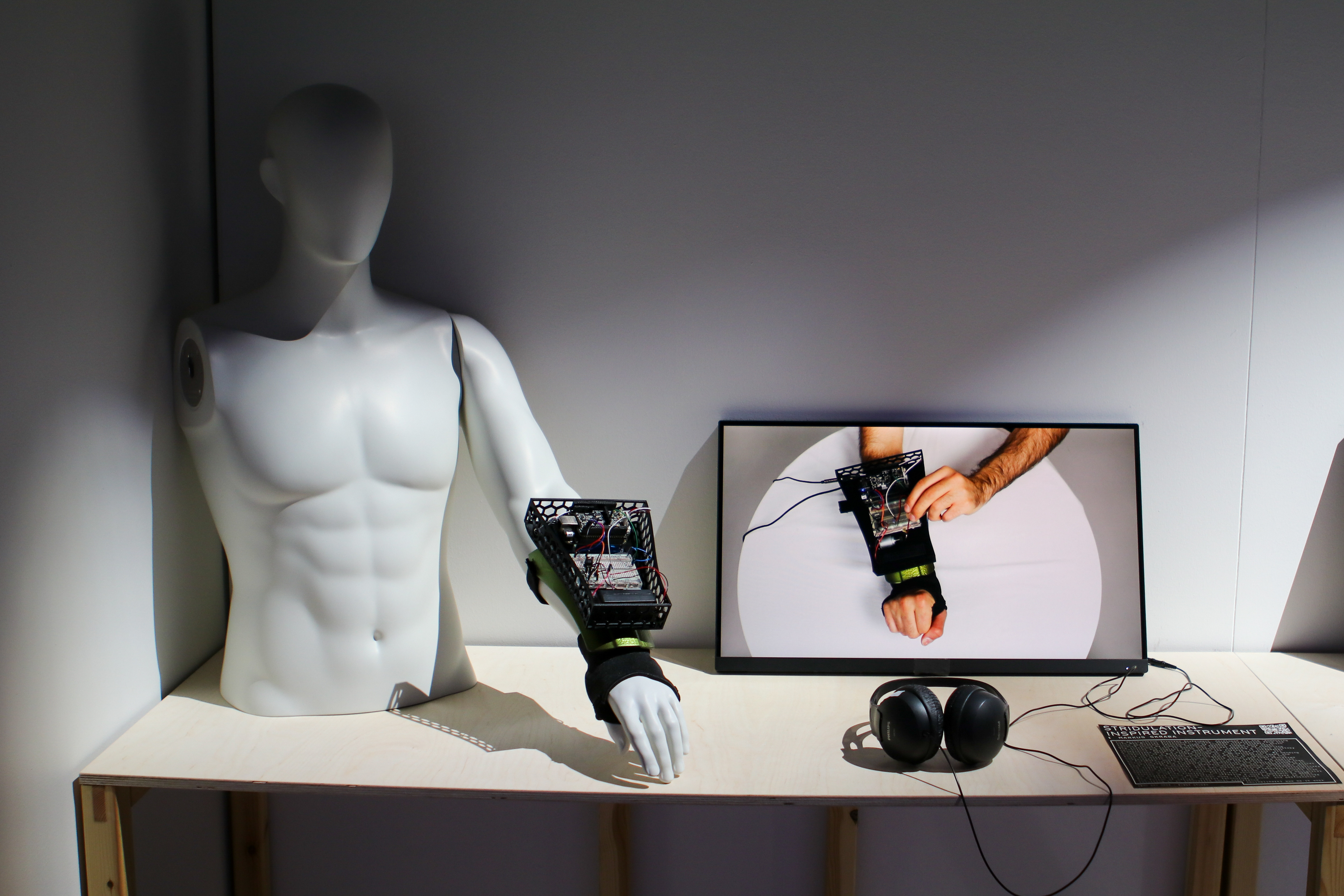Photographs of the glove and interface.
The Stridulation-Inspired Instrument, developed for the "Composing with New Musical Instruments" course, draws inspiration from the sound generation technique used by insects like crickets, which produce sound by rubbing hardened body parts against ridged ones. The instrument aims to mimic this natural process by combining mechanical and digital sound synthesis, creating a unique auditory experience.
Designed to be worn on the forearm, it integrates a motorized gear, a piezo microphone, and a flex sensor, all controlled by a Bela board housed in a 3D-printed case. By bending their wrist, the player controls the gear’s rotation speed and uses the piezo microphone to interact with it, producing the characteristic chirping sounds. These sounds are then processed in PureData, where filters and grain delay effects are applied, which the player can also control with their wrist, allowing them to manipulate the interplay of mechanical and digital elements in real time.
Stridulation-Inspired Instrument worn on the right forearm.
The project’s greatest challenge was integrating physical and digital components into a cohesive, ergonomic instrument with intuitive interaction. This was achieved through an interdisciplinary approach and iterative prototyping, ensuring a seamless connection between concept and functionality.
The result is an instrument that creates a nature-inspired, futuristic soundscape blending mechanical and digital sound generation, offering a novel approach to NIMEs. As an extension of the human body, it allows the player to explore the fusion of nature, digital technology, sound, and performance, resulting in an innovative sonic experience that aims to deepen our understanding with the natural environment. The instrument was showcased at the Aalto Media Lab's 30th anniversary exhibition 2024 in Espoo, Finland.
2024, coursework, new interfaces for musical expression, stridulation, nature-inspired instrument
Tools used: Bela board, PureData, Fusion 360
3D-MODELS


3D-models designed for integrating the electronics.



Photos from the Aalto Media Lab's 30th anniversary exhibition.